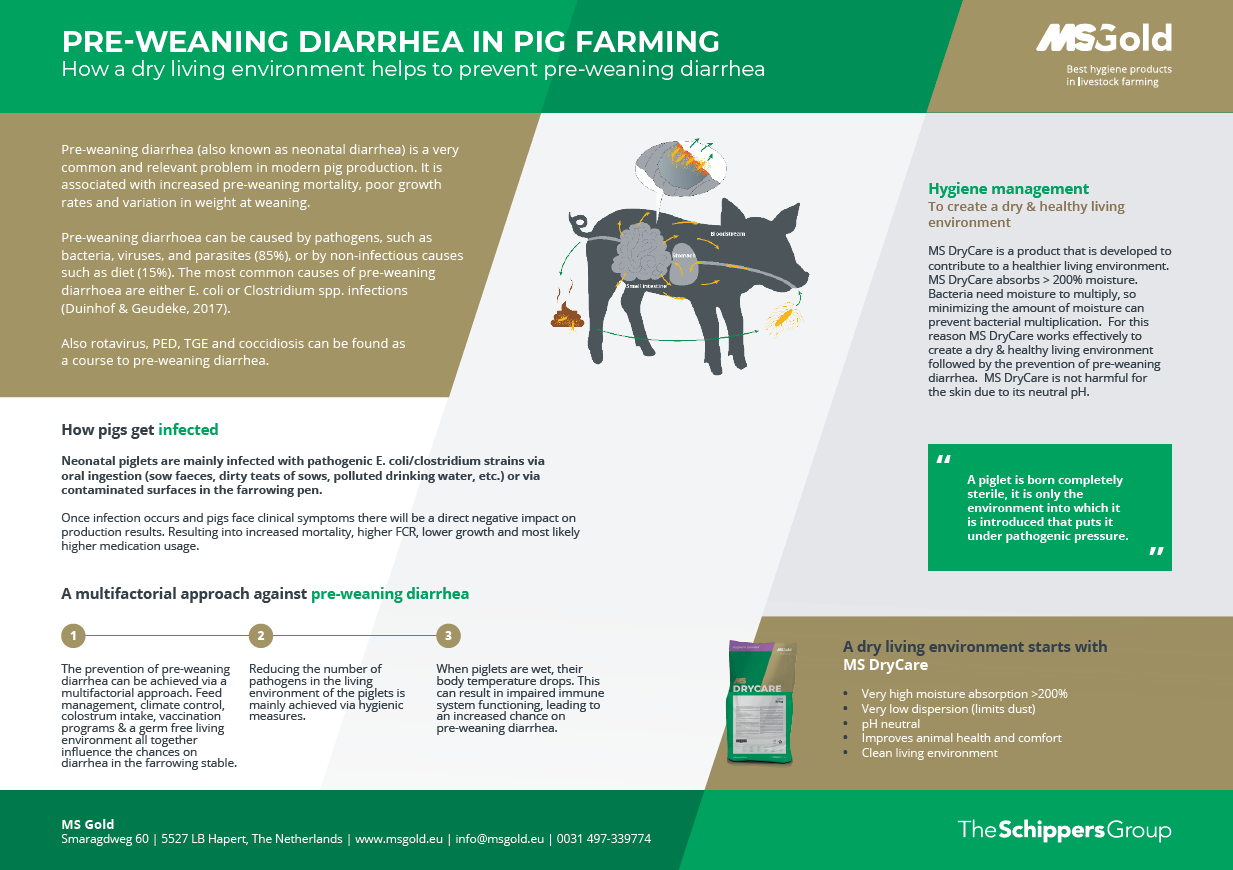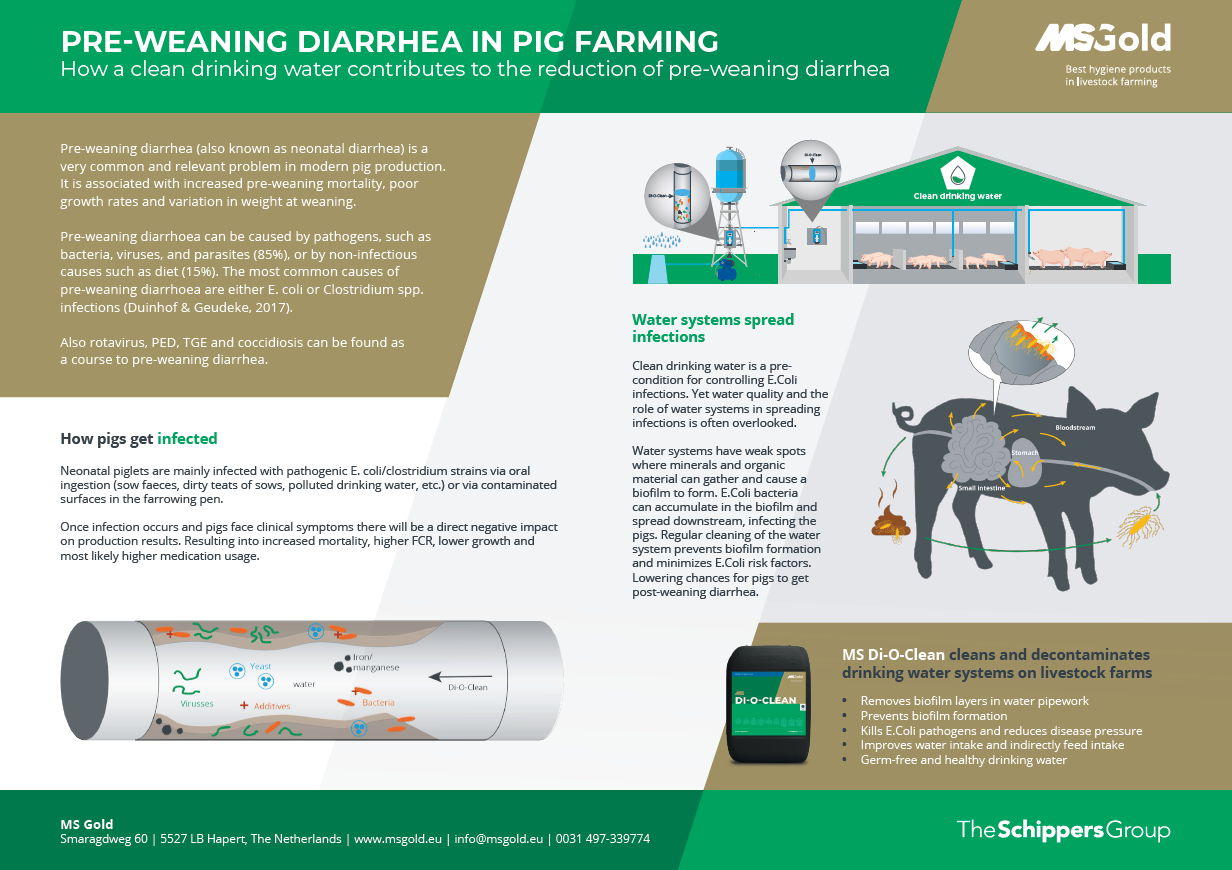Pre-weaning Diarrhea
in pigs
Pre-weaning diarrhea can be caused by different pathogens, including the rotavirus, coccidiosis, or other agents such as E. coli. Pre-weaning diarrhea occurs in most litters from 14 days to 3 weeks or age or until weaning.

The costs of Pre-weaning Diarrhea
Mortality rate
Costs per sow per year
Effect on weight
Prevention is key
Learn about measures you can take that make impact
A dry living environment helps prevent pre-weaning diarrhea

Disinfection helps create a germ free living environment.

Cleaning prepares the surface for disinfection.

Clean water prevents infection.

A dry living environment helps prevent pre-weaning diarrhea
What you will find in this download:
Pre-weaning diarrhea (also known as neonatal diarrhea) is a very common and relevant problem in modern pig production.
It is associated with increased pre-weaning mortality, poor growth rates and variation in weight at weaning.
Key topics in this one page summary:
- How piglets get infected.
- How to create a dry living environment.
- Which products to use.
- How to reduce germ pressure.
Disinfection helps create a germ free living environment.
What you will find in this download
Pre-weaning diarrhea (also known as neonatal diarrhea) is a very common and relevant problem in modern pig production.
It is associated with increased pre-weaning mortality, poor growth rates and variation in weight at weaning.
Key topics in this one page summary:
- How piglets get infected.
- The effect of disinfection on germ pressure.
- Which products to use.
- How to reduce germ pressure.
Cleaning prepares the surface for disinfection.
What you will find in this download
Pre-weaning diarrhea (also known as neonatal diarrhea) is a very common and relevant problem in modern pig production.
It is associated with increased pre-weaning mortality, poor growth rates and variation in weight at weaning.
Key topics in this one page summary:
- How piglets get infected
- Why using a detergent is critical to reduce pathogens
- Which products to use
- How to reduce germ pressure
Clean water prevents infection.
This summary is about:
Pre-weaning diarrhea (also known as neonatal diarrhea) is a very common and relevant problem in modern pig production.
It is associated with increased pre-weaning mortality, poor growth rates and variation in weight at weaning.
Key topics in this summary:
- How piglets get infected.
- Why clean drinking water helps improve performance.
- Which products to use.
- How to reduce germ pressure.








